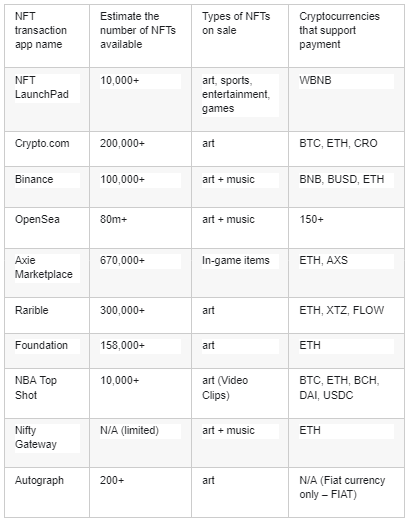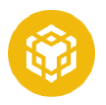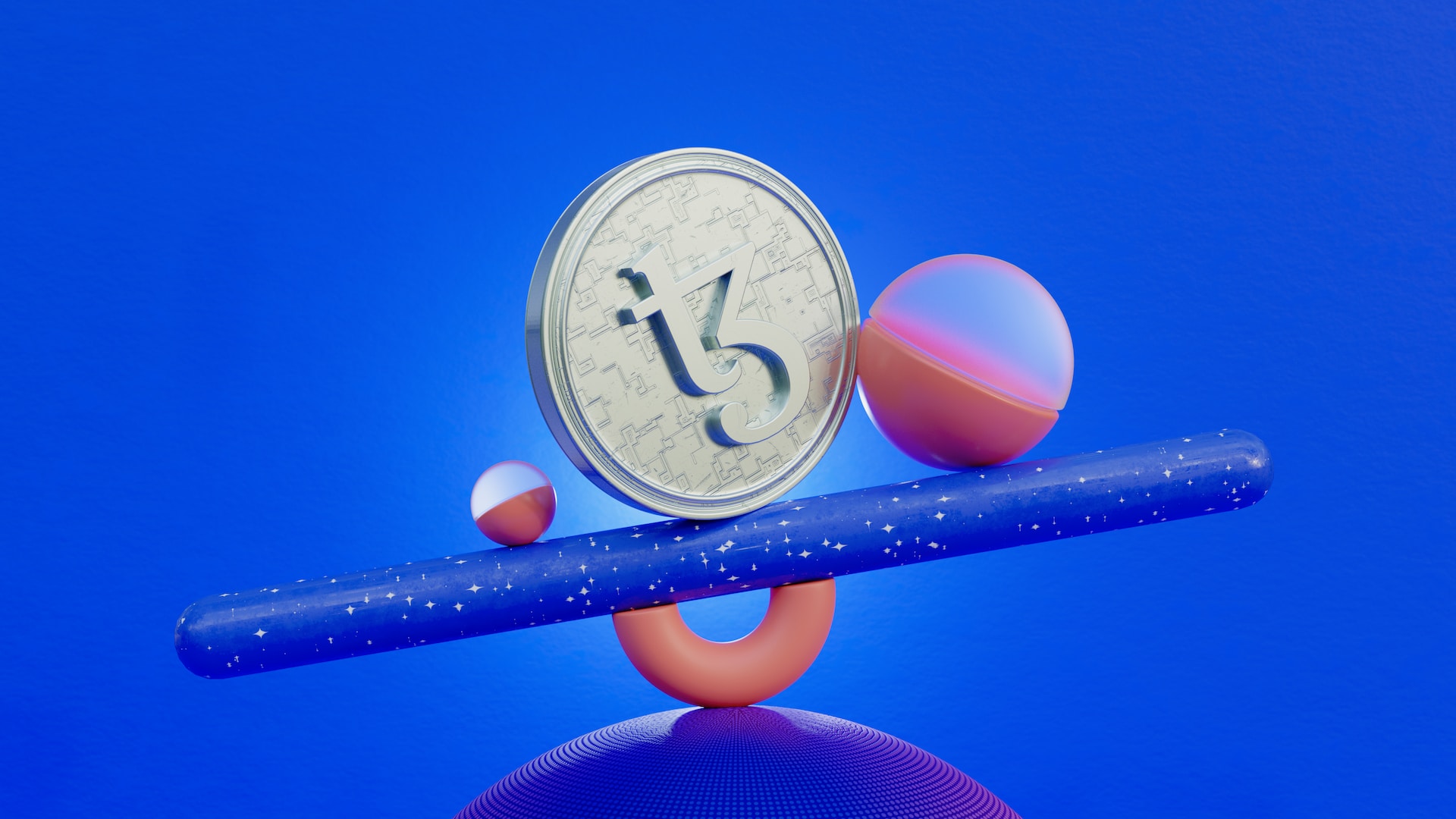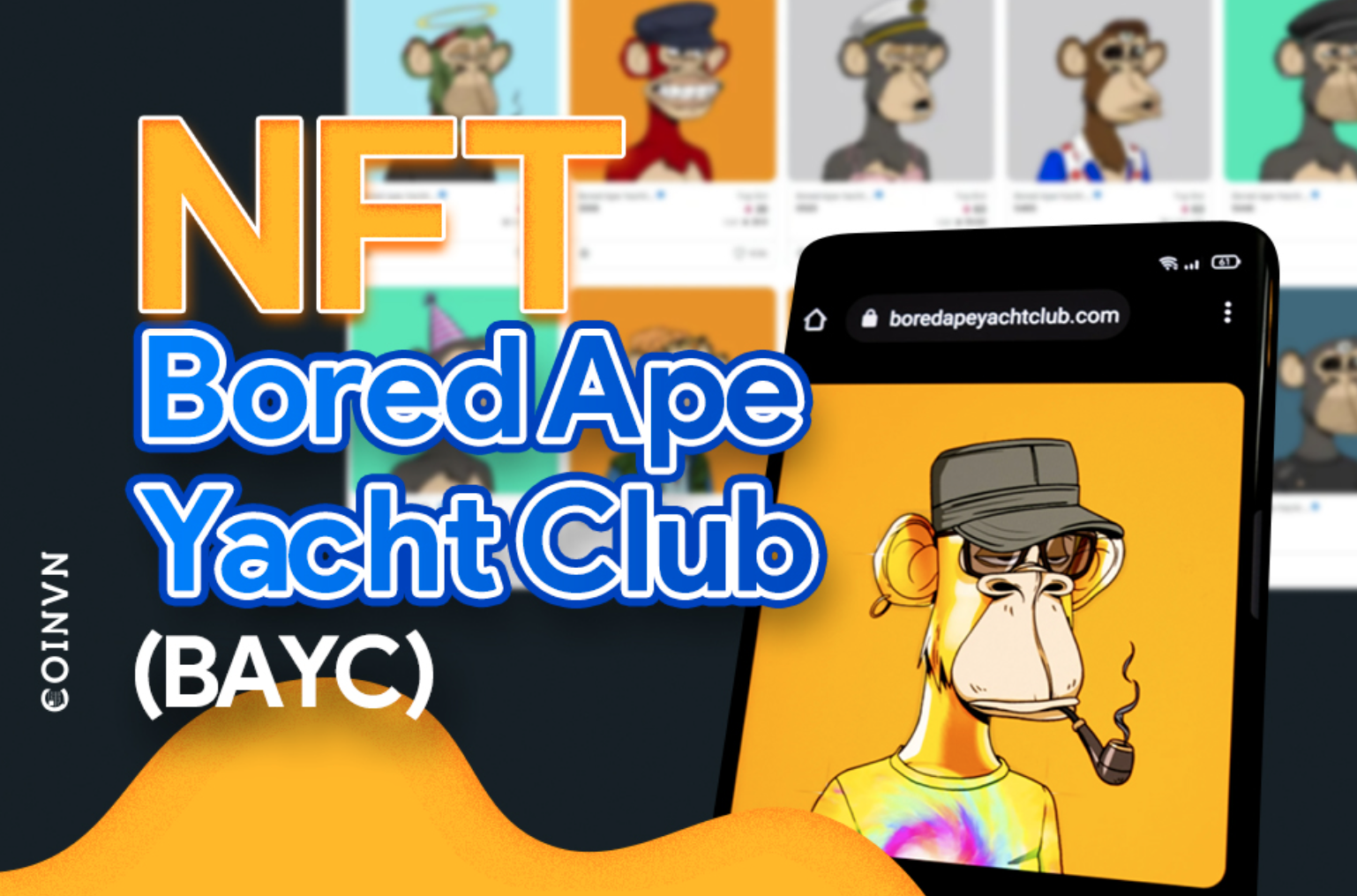Last year was a great year for NFT, with the market milestone hitting a $40 billion valuation for the first time. In addition, more than $10 billion in NFTs are now sold every week on NFT trading apps, which is a staggering amount.
In this article, we will explain what NFT is, introduce the best NFT apps available, how the NFT app works, and how to use the NFT app.
10 Best NFT Apps for 2023 Reviewed
What is NFT? The best NFT app explained
NFT is not too different from traditional digital currencies like Bitcoin, Ethereum, and Dogecoin. NFTs are digital assets that run on the blockchain in the form of art, music, in-game items, videos, and more. NFT transactions are done through online buying and selling, often in cryptocurrencies, and they are typically encrypted with the same underlying software as many cryptocurrencies.
This ensures that NFTs can be transferred from one wallet to another quickly, securely, and at a low cost. Being built on a blockchain network also ensures that NFTs are transparently verifiable.
However, what distinguishes NFT from the aforementioned digital currencies is that each token can be identified through a unique transaction hash. Simply put, NFT is unique, no two NFTs are alike.
What is special about an NFT?
Cheap NFT Auctioned at Crypto.com
That’s why NFT is ideal for storing real-world value. Cryptocurrencies like Bitcoin, on the other hand, are swappable – meaning that if you exchange 1 BTC for another without much change, you still have 1 BTC worth in your wallet.
However, NFTs are different, NFT tokens have no relationship to any other circulating digital assets, which is why they are described as non-fungible.
How does NFT work?
Now we can dig a little deeper into how the best NFT buy apps work, how to use the NFT app.
The important thing that you need to keep in mind if you are considering buying NFT on your own is that you must have a firm grasp of how the blockchain sector works before risking any money.
The best NFT apps rated
When researching how to buy NFT, you will likely come across two main methods to purchase or play NFT games – the web-based platform and application. Both ways of buying NFT on the two platforms have their pros and cons, although the apps will be easier and more convenient to use.
So, let’s dive into the best NFT apps available on the market to make sure you can make an informed investment decision.
1. OpenSea – Best Overall NFT App for 2023
OpenSea is the world’s largest NFT marketplace for asset selection, boasting over 80 million NFTs for investors to trade and trade volume for.
The OpenSea app is one of the best NFT apps out there, has a nice interface, and offers the ability to follow the NFT creators you care about.
You can connect the OpenSea app to your web-based account and view NFTs you’ve previously purchased, and you can even create an NFT ‘wish list’ to keep an eye on hot assets. The buying process is easy, as OpenSea supports over 150 cryptocurrencies for payment, with the only charge being a 2.5% fee for NFT merchants.
Plus, after purchasing NFT with OpenSea, you can choose between 14 different wallet providers for storage.
OpenSea has also listed a new collection of ultra-rare Tamadoge NFT pets that investors can bid on until October 13. The pets form the heart of Tamaverse, Tamadoge’s broader ecosystem; the meme coin project has been pumping since the IEO at the end of September.
2. NFT LaunchPad – Widely used NFT app with a wide selection of assets

NFT LaunchPad emerged as one of the best NFT virtual currency Web3 platforms in 2023, providing popular NFT collections for investors to browse and buy. These NFTs come from various categories, including sports, trading cards, metaverse items, digital art, and more.
NFT LaunchPad assets are stored on the BNB Chain, an evolution of the Binance Smart Chain (BSC). All platform assets are denominated in BNB, which can be easily purchased from most of the best NFT crypto exchanges.
Various premium items are on sale on NFT LaunchPad, including CryptoCreatures, Punk Dogs, and even some CryptoPunks. However, NFT Lucky Block has generated the majority of the platform’s trading volume in recent weeks as holders of these NFTs are automatically entered into exciting sweepstakes.
This new NFT project allows holders to win exclusive prizes by purchasing and storing Lucky Block NFT. Prizes include housing, vacations, $1 million worth of BTC, and even a Bored Ape NFT. Investors connect the MetaMask wallet (or use WalletConnect) and make an offer or buy at a fixed price.
Sellers will also be attracted to NFT LaunchPad, as they can create NFTs easily without any advanced knowledge. There’s even support for rare formats like MP4, so the NFT LaunchPad is ideal for creators.
3. Crypto.com – Fast-growing NFT app with multi-chain support
![]()
Another top pick when it comes to the best NFT trading app and NFT wallet is the Crypto.com app. Crypto.com has grown to over 10 million users in the past few years.
Although the marketplace is built on the Crypto.com blockchain, the platform recently opened up new opportunities with the announcement that it will add support for Ethereum-based NFTs. Notably, the Crypto.com NFT marketplace does not charge any transaction fees when users purchase NFT, which is in stark contrast to most other platforms.
In terms of payments, Crypto.com allows users to make their purchases simpler via cryptocurrency or credit/debit card. NFTs on the Crypto.com app tend to be listed as auction or fixed price and will automatically be transferred to your account after purchase.
Also, even though the NFT marketplace only supports the browser version, Crypto.com is planning to develop the Crypto.com app, which aims to give traders access to a number of well-priced NFT projects on the market. However, the NFT Crypto.com marketplace is currently unavailable in the United States.
4. Binance – Top NFT App with Low Fees
![]()
One of the other best NFT buying apps to consider is Binance. Binance is widely regarded as one of the best cryptocurrency exchanges in the world, thanks to its rich selection of assets and daily trading volume.
Like Crypto.com, Binance entered the NFT market in 2021 by launching the Binance NFT Marketplace, providing a new way for users to buy and sell NFT more easily.
You can access the Binance NFT Marketplace with your Binance login, so you won’t need to create a new account. Furthermore, you can access the NFT market through the Binance mobile app with both iOS and Android versions. The NFT offering marketplace is hosted on both Binance and Ethereum Smart Chains – and it costs you just 1% of the transaction fee to make a purchase.
Regarding categories, the NFT purchase app offers NFTs related to art, sports, entertainment, games, and more. Invest, buy a ‘box,’ and get NFT at random. From there, traders can get rare assets at a lower price.
Although the Binance NFT Marketplace does not allow users to purchase NFTs with a credit or debit card, it does allow users to purchase the required digital currency through the Binance exchange.
5. Rarible – Best NFT Trading App for Mining

Rarible is the best NFT app to keep track of upcoming NFT launches. You can download the app on the App Store or Google Play, and it allow users to browse any Ethereum address and view any collection on the blockchain.
The app also has another useful feature that shows trending NFTs, and you can even create a custom news feed with the creators you’re following.
Currently, you cannot purchase NFT on the trading app, so you must purchase it on the website platform. Purchases come with a 2.5% fee for buyers and sellers, although Rarible makes up for this by supporting assets hosted on the Ethereum, Tezos, and Flow blockchains.
In addition to buying with cryptocurrencies, Rarible allows users to purchase NFTs with a credit or debit card. In particular, Rarible is the ideal platform for users who want to mint their own NFT, as the process is extremely user-friendly and can be completed in just a few minutes.
Compare the top NFT apps
Now that you have a clear understanding of the best NFT trading apps available on the market, here’s a comparison of the key factors to keep in mind as you make your decision:

How does the NFT trading app work?
Simply put, NFT apps provide an easy-to-use platform for buyers and sellers to facilitate NFT transfers. These apps work similarly to brokers and exchanges, acting as ‘middlemen’ in transactions.
To compensate for facilitating NFT transfers, NFT applications typically charge a fee. For the most part, this fee is charged only to the seller – although some platforms will also assign this fee to the buyer.
The best crypto apps for NFT trading also offer NFT minting. Mining refers to placing a digital creation on a blockchain, where it can be traded and monetized. Again, this process tends to come with a fee charged by the network on which the NFT is being minted – for example, an Ethereum-based NFT will accrue GAS fees as it is minted.
Overall, these NFT apps are ideal for investors looking to buy and store digital assets securely. Many apps support credit/debit card payments and multiple cryptocurrencies, while others offer compatibility for various crypto wallets.
Additionally, some NFT applications (such as the one offered by Crypto.com) even combine the NFT marketplace with a cryptocurrency exchange, giving investors an ‘all-in-one solution.
Self-generating application NFT
An essential subset of the NFT trading application is the NFT self-generating application. As the name suggests, these apps focus on the NFT creation process, allowing users to design and create NFTs for sale. NFT generation apps are ideal for beginners and skilled investors, as they allow the NFT creation process to occur on the user’s smartphone or tablet. Once created, NFTs can be minted and sold using reputable NFT marketplaces like those mentioned earlier in this guide.
If you’re interested in creating NFTs today, here are the three best NFT generator apps available for your smartphone or tablet:
- Sketchar – Sketchar is ideal for beginners, as it has a ton of backgrounds, filters, graphics, fonts, and more. The application uses layers (like Photoshop) that allow detailed artwork to be created.
- NFT Generator – The NFT generator is free to use and has many templates that make it easy to create NFTs based on trading cards. The app even has a dedicated marketplace where you can buy NFTs created on the platform.
- GoArt – GoArt is ideal if you want to turn photos into NFTs, as the app has hundreds of unique filters. There are many tools and features to enhance images, although many tools will come at a cost.
Where to buy crypto to use on the NFT trading app

As you may already know, the majority of NFTs are denominated in cryptocurrencies. As a result, you will have to purchase Ethereum (or another cryptocurrency) to facilitate the purchase and pay any associated network fees. There are many platforms available that allow traders to buy cryptocurrencies online – although our recommendation is to partner with OKX.
OKX is one of the world’s leading online brokers, boasting over 23 million users worldwide. The platform is regulated by many leading institutions, including FCA, ASIC, CySEC, FinCEN, and FINRA.
OKX users can invest in more than 45 cryptocurrencies without commission, as OKX includes all fees in the spread.
Notably, buying crypto with OKX means you own the underlying asset – in stark contrast to CFD brokers. The minimum investment amount with OKX is just $10, with deposits able to be made via credit/debit card, bank transfer or e-wallet (such as PayPal).
Finally, OKX even offers a free crypto wallet app for all users, featuring advanced standardized protocols and DDoS protection to ensure the safety of your crypto holdings. Friend.
If you want to buy crypto with OKX right away, you can do it in minutes by following these four quick steps:
- Step 1 –Create an OKX Account: Click ‘Join Now’ on the OKX homepage, enter your email address and choose a username and password for your account.
- Step 2 – Account Verification: Verify your trading account by completing a KYC check and uploading proof of ID (e.g., passport) and proof of address (e.g., statement bank).
- Step 3 –Deposit: Deposit at least $10 into your account via credit/debit card, bank transfer, or e-wallet.
- Step 4 –Buy Cryptocurrency: Search for the cryptocurrency you want to buy and click on ‘Trade.’ Enter your position size in the order box (minimum $10) and click ‘Open Trade.’
How to use the NFT -trading app
As mentioned earlier, our recommended NFT platform is the NFT LaunchPad because the information provided is extremely clear, and detailed. Starting with that idea, we’ll show you how to use LaunchPad, which only takes a few minutes!
Step 1 –Set up a crypto wallet
The first thing to do is to set up a crypto wallet to store NFTs after purchase. NFT LaunchPad fully supports MetaMask, which is free and easy to use.
Visit MetaMask’s website, click ‘Download’ and follow the on-screen instructions.
Step 2 – Buy Bundle BNB (WBNB)

NFT LaunchPad assets denominated in BNB can be easily purchased through the best DeFi exchanges, such as PancakeSwap. Make sure to buy more BNB than you need to charge any network fees.
Step 3 –Link Wallet to NFT LaunchPad
Navigate to the NFT LaunchPad website and click on the wallet icon in the top right corner. Follow the instructions on the pop-up box that appears to connect the MetaMask wallet created in Step 1.
Step 4 – Browse NFT
Users can now browse through NFT LaunchPad collections by clicking the ‘Explore’ button and selecting a category to view.
By clicking on an NFT, users can view list prices, price history, creator information, and other related data.
Step 5 – Buy NFT
NFT LaunchPad allows buyers to make an offer (auction style) or buy NFT instantly at the list price.
Either way, once the NFT has been purchased, it will be transferred to the associated crypto wallet for storage.
Best NFT Cryptocurrencies for 2023
Besides some of the top NFT apps, traders will also look for top crypto projects to invest in. We recommend Tamadoge as one of the best NFT projects to invest in 2023.
Tamadoge is a meme coin that has just pumped nearly 2,000% more from its presale price despite the broader crypto bear market and is expected to make more profits in the coming weeks.
However, in addition to providing meme coin potential, Tamadoge owns NFTs and games for monetization within its ecosystem.
The very first set of 100 extremely rare Tamadoge Pet NFTs has just been auctioned on OpenSea, with prices starting at 1ETH – the auction runs until October 13.
Pet owners can care for, feed, and raise their pets before they mature and battle other players for prizes.
Later in the roadmap, other P2E arcade games will be released, and Pets will also have an augmented reality app that will allow owners to explore the real world with them.
Conclusion – Best NFT App
In a nutshell, this guide has discussed the best NFT apps in detail, highlighting which options have the best features and the lowest fees. It’s never been easier to buy and sell NFTs these days – and by choosing one of the apps on our list, you’ll be able to participate in the NFT market in no time.
OpenSea is the leading NFT application thanks to its huge user base, huge collection of assets and market leading trading volume.
The platform has also just started hosting experts’ top pick for the best NFT crypto project, Tamadoge.






